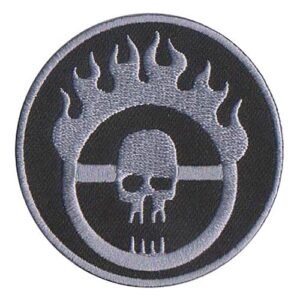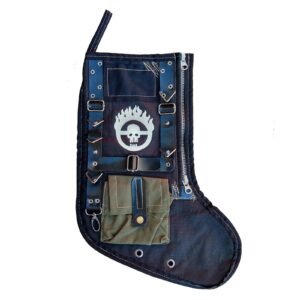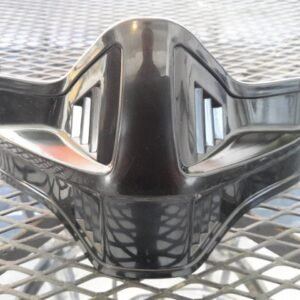How to Distress, Weather & Age Your Garments
Brought to you by WADE: the Weathering, Aging & Distressing Encyclopedia (http://askWA.DE)
Many people have asked for advice on weathering their costumes, particularly the leather items. Hopefully these tips will keep you from tying your jacket to a vehicle and dragging it down the road.
Leather
The basic supplies normally used for leather distressing are: sandpaper, acetone and alcohol.
Alcohol helps take the shine off of leather (it may also take off protective coatings and dry the leather).
Acetone is a stronger version of alcohol & helps take the dye out of the leather – but your results will depend on the quality and method of the dyeing. If your leather is black all the way through, acetone will probably not do much because of the amount of dye. Ideally, you want the acetone to reveal some of the brown leather on areas that normally have wear (seams, elbows, edges, etc). This may take a lot of acetone and some time and energy. Be especially careful with acetone, as it is a hazardous chemical.
Sandpaper is fast and harsh, although at first you might be surprised how well the leather is taking it. Use it sparingly and use it as a last resort. Start with a fine sandpaper and work your way up to coarser papers. The sandpaper will scratch up your leather and is best on edges and seams (especially if the acetone didn’t help). Sandpaper is not recommended before alcohol or acetone application. As a matter of fact, you may want to rub in some conditioner to keep your jacket from drying out and cracking from the damage.
Some other techniques:
One technique you can try is washing your leather garment in the washing machine using the gentle cycle. Adding lots of fabric softener is an option. This will agitate the leather, and possibly remove extra dye. After that, you can put it in the dryer without heat and let it tumble around (you might want to put it in a pillowcase or add towels).
You can also just do the dryer on its own, without heat, to help agitate and soften the leather. Heat will make leather shrink.
Some suggest getting the garment wet or very damp, and then allowing it to dry. One option is to wear it while damp, or to let it dry while while wearing it, as this will conform the garment to your body and create wrinkles that may remain. Just remember to keep the garment out of the heat, because it may shrink.
One costume designer soaked a leather jacket in “the juice of oranges and lemons” in order to give it a softer, worn-in look. The assumption here is that the citric acids broke down some of the proteins in the leather.
Honestly, in my opinion, Max’s leathers were not THAT weathered. And at the end of the day, you can go a long way with some alcohol and applying some fuller’s earth (fuller’s earth is a fine dust used in the film industry).
See more at askWA.DE
Fabric
There are many ways to distress fabric. Washing and drying is the most common, especially for new fabric. A hot wash or hot dryer cycle will damage the fibers, leaving the fabric looking used, and often slightly faded (and sometimes shrunken). For the washer, you can add harsh cleaners like Arm & Hammer Super Washing Soda, abrasives like salt, and add lots of fabric softeners to soften and weaken the fabric.
Use sandpaper, Dremel sander tips, and wire brushes to rough up fabrics.
Adding paints and dyes can also make fabric look worn and stained. Acrylic paints are usually the best to use – they are water-soluble and stay on in the wash (make sure they are dry or heat-set them first). Try to avoid motor oil or oils in general as they may rub off onto undesirable places. Dyes are harder to use, as most dyes, even coffee or tea stains, normally require high temperatures to work, and require a lot of dye or long exposure times to achieve a strong color. Nice effects can be achieved by spraying or pouring dyes or diluted paints onto a garment. Always wash a dyed garment thoroughly to get most of the excess dye out. Rit dyes are available at most fabric stores and even many large retailers. Rit dyes can be set using various methods to avoid bleeding. Fabric-reactive dyes offer more control over the process, do not bleed, and can be applied at room temperature.
Fuller’s earth diluted in water is a good way to temporarily stain or muddy garments. Put a couple tablespoons into a spray bottle and mix with water. Fullers earth comes out in the wash.
To fade a black t-shirt, try mixing some bleach into a plastic bucket of water and leaving the t-shirt immersed, watching it carefully until the desired shade is achieved. Remember that a wet t-shirt is always a couple shades darker than a dry t-shirt. Or, try putting the shirt on a mannequin and leaving it out in the sun for a couple of months, rotating the mannequin occasionally to achieve a realistic fade.






